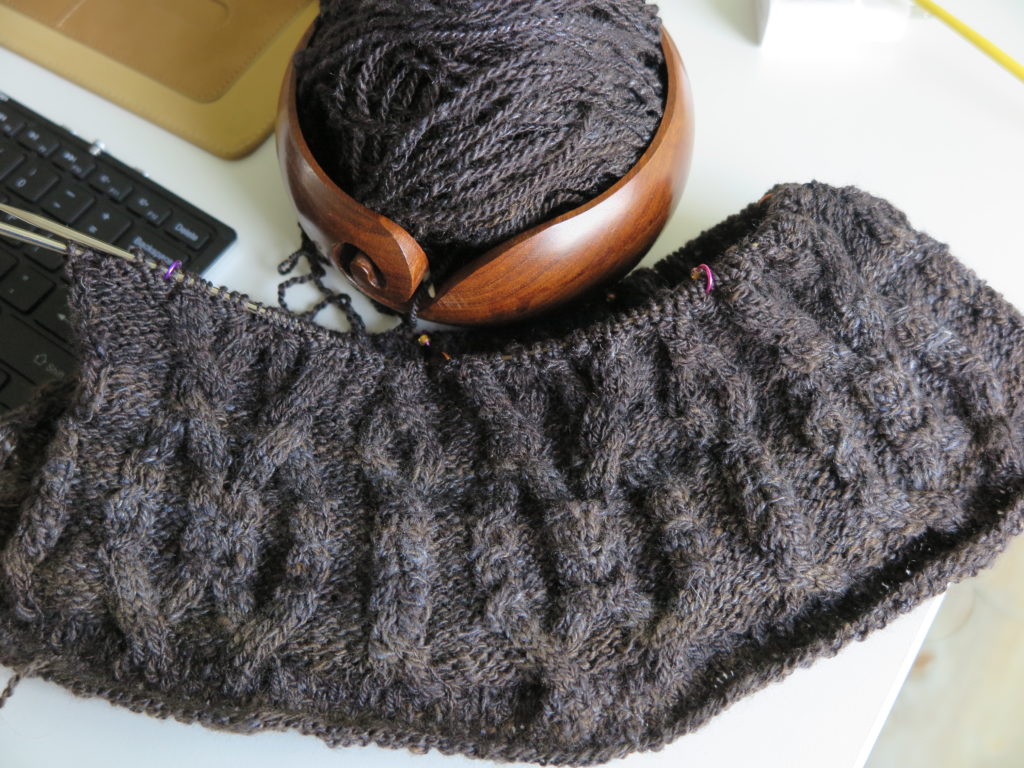First, yes, I did have to eliminate those other rows I was eyeing. It was clear I wasn’t going to make it if I kept them. But now I am solidly past the half way mark, my cowl still looks good, and I’m on track to use 112g of my 113g.

Now I just have to remember not to relax my knitting and accidentally use up more yarn for the 2nd half. Am I speaking from experience? Nooooo….
If you are interesting in hand spinning, science, history or any combo there of, I suggest checking out this cool article on identifying splicing in old textiles. I first learned about splicing in the book Prehistoric Textiles. Instead of drafting out plant fibers, the ends are overlapped. This doesn’t work well with animal fibers or cotton (too short) but does work with things like flax (super long). One thing I found particularly interesting is that the article’s authors determined that splicing can be done (and might even work better) with plant fibers that are less heavily processed than needed for drafting.
